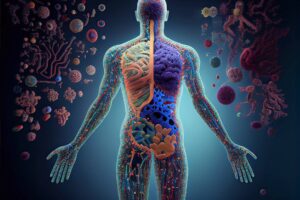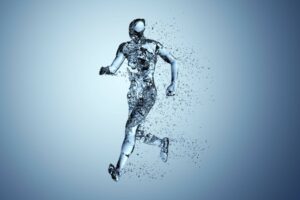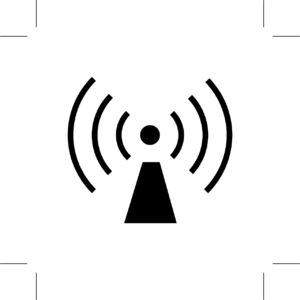
The shift in time during daylight saving changes can disrupt our bodies more than we realize. Losing or gaining an hour may seem trivial, but this shift often affects sleep patterns, mood, and stress levels. The body’s internal clock, known as the circadian rhythm, is sensitive to time changes, leading to symptoms like irritability, lack of focus, and increased stress. For many people, chiropractic care offers an effective solution to relieve stress caused by a time change. The Impact of Time Change on the Body When the clocks shift, your body must adjust its biological rhythms to match the new…
Read MoreChiropractic care, often associated with relieving back pain and improving spinal health, plays a more significant role in overall wellness than many realize. Recent research highlights how chiropractic adjustments can boost immune function, providing a holistic approach to health that goes beyond pain management. The immune system is our body’s defense against infections and diseases. It works tirelessly to identify and destroy harmful invaders like bacteria and viruses. However, a compromised or weakened immune system can lead to increased susceptibility to illnesses. This is where chiropractic care steps in. The central nervous system, which includes the brain and spinal cord,…
Read MoreProper hydration is crucial for overall health, but its significance for spinal health is often overlooked. The spine, a complex structure of bones, discs, and nerves, relies heavily on hydration to function optimally. Drinking enough water can prevent back pain and support spinal integrity, enhancing overall well-being. The spinal discs, located between the vertebrae, act as cushions to absorb shock and facilitate movement. These discs are primarily composed of water, making hydration essential for their health. When you’re adequately hydrated, the discs maintain their height and flexibility, effectively absorbing impact and reducing the risk of injury. Conversely, dehydration can cause…
Read MoreSpending excessive time glued to a cell phone can wreak havoc on both your physical and mental well-being. The allure of endless scrolling, gaming, and social media engagement often leads to prolonged periods of poor posture, strained eyes, and heightened stress levels. The damage caused by this digital dependency manifests in various ways, affecting not only your immediate comfort but also your long-term health. Physically, excessive cell phone use contributes to a phenomenon known as “text neck” or “tech neck.” Text neck arises from the constant downward tilt of the head while staring at a screen, placing immense strain on…
Read MoreAs spring emerges, it brings about changes in weather, outdoor activities, and even shifts in our bodies. Visiting a chiropractor during this season can be particularly beneficial for various reasons, offering a proactive approach to health and wellness as individuals transition from winter hibernation to more active lifestyles. Spring signifies a time of increased physical activity for many people. After months of indoor confinement during winter, individuals often engage in outdoor sports, gardening, hiking, and other recreational activities. These activities can place additional stress on the musculoskeletal system, leading to strains, sprains, and other injuries. Visiting a chiropractor in the…
Read MoreWellness planning is an active and strategic process individuals undertake to enhance their overall health and well-being. It involves proactive measures such as adopting healthy habits, managing stress, and maintaining a balanced lifestyle. One valuable resource in this endeavor is a visit to Dr. Defino, who offers a range of services and expertise to support individuals in their wellness journey. At our office, individuals can receive personalized guidance and treatment to address various aspects of wellness. Chiropractors specialize in spinal health and nervous system function, recognizing the central role these systems play in overall health. Through spinal adjustments and manipulations,…
Read MorePostural disorders, characterized by misalignments or abnormalities in the body’s posture, can have a significant impact on overall health and well-being. Addressing these issues is crucial, and chiropractors play a pivotal role in providing active solutions to alleviate discomfort and improve posture. Chiropractors actively assess and treat postural disorders by employing a hands-on, proactive approach. Through a thorough examination, they identify imbalances, misalignments, and musculoskeletal issues that contribute to poor posture. This active diagnostic process enables chiropractors to tailor their interventions to the specific needs of each individual, recognizing that postural problems can vary widely among patients. Chiropractors actively engage…
Read MoreWalking and incorporating daily movement into your routine offers an array of profound benefits that positively impact both your physical and mental well-being. Engaging in this simple yet effective form of exercise serves as a cornerstone for a healthier lifestyle. First and foremost, walking contributes significantly to physical fitness. It’s a low-impact activity that doesn’t require any special equipment. This makes it accessible to nearly everyone. Regular walking strengthens muscles, particularly in the legs and core, enhancing overall stability and balance. Moreover, it promotes better cardiovascular health by increasing heart rate and improving circulation, which in turn reduces the risk…
Read MoreEating healthy food in season and sourced locally offers a multitude of advantages that extend beyond mere taste and freshness. This practice not only enhances the flavor of meals but also contributes significantly to personal health, environmental sustainability, and local economies. Firstly, seasonal and local foods are often at their peak in terms of flavor and nutrients. When fruits and vegetables are allowed to ripen naturally and picked at the right time, they tend to be richer in vitamins, minerals, and antioxidants. This freshness not only amplifies the taste but also ensures maximum nutritional benefits for those consuming them. Moreover,…
Read MorePEMF, or Pulsed Electromagnetic Field therapy, has gained increasing recognition for its numerous health benefits. This non-invasive and drug-free approach utilizes electromagnetic fields to improve overall well-being and address various health conditions. The active nature of the treatment sets it apart, as it directly interacts with the body’s cellular processes to promote healing and enhance bodily functions. One of the key advantages is its ability to accelerate the body’s natural healing processes. The electromagnetic fields generated by PEMF devices penetrate deep into the body, reaching cells and tissues. This stimulation enhances cellular repair and regeneration, expediting the healing of injuries,…
Read More- « Previous
- 1
- 2
- 3
- Next »










